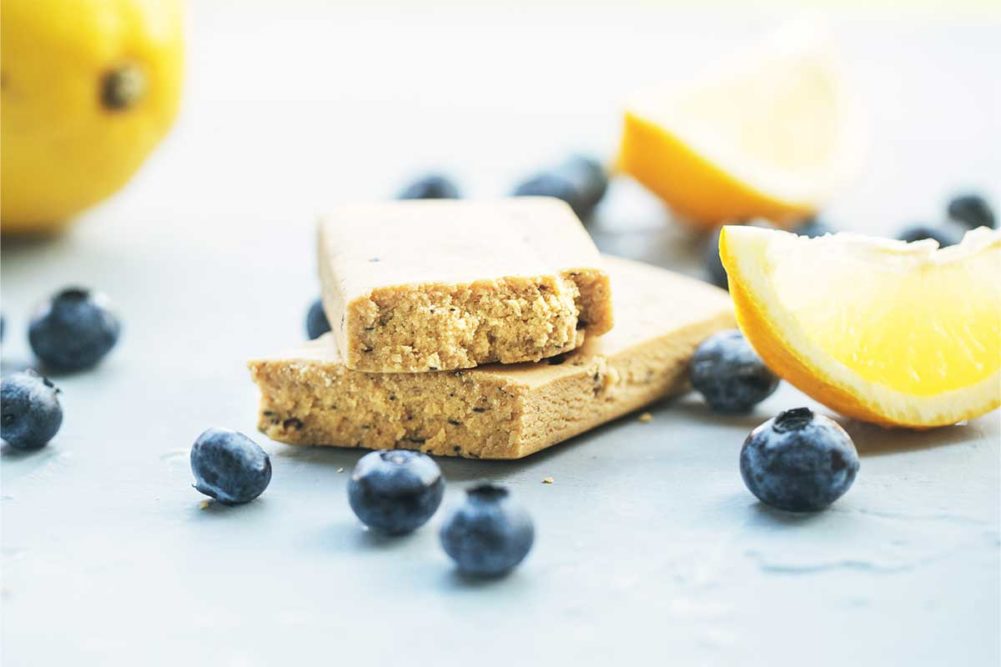Whey, soy and wheat are high-quality proteins used in many snack and bar applications, but the pursuit of clean label, plant-based products that are allergen-free can eliminate these options, depending on the claims snack and bar makers are pursuing.
“Plant-based is definitely having its moment in the sun, as is low sugar,” said Emily Jackson, technical service manager, Manildra Group USA. “Consumers are reflecting more on their food choices in the wake of the ongoing pandemic and are making choices that directly impact their health and the health of the planet.”
And there are many plant-based options with newer ones emerging.
“Any pulse or ancient grain in a flaked, grit or flour form can be utilized to enhance the protein of a snack such as pressed bars, crackers or extruded snacks, to name a few examples,” said Jennifer Tesch, chief marketing officer, Healthy Food Ingredients.
Peas and other pulses do have their challenges, including giving bars a gritty, powdery or dry texture, but those problems can be offset with binding syrups, said Erin Nese, senior technologist, commercial innovation acceleration, Ingredion. Managing the taste is crucial as well.
“Plant proteins have inherent flavors that are beany or earthy,” Ms. Nese said. “Choosing a plant protein with the cleanest flavor profile will help with overall flavor. Flavor maskers can also be used to neutralize or mask off-notes. Formulators should work with flavors which complement plant proteins. Chocolate or nutty flavors pair well with many pea proteins in bars.”
A combination of plant proteins can also help overcome some of the challenges associated with them.
“Certain plant-based proteins in raw whole form such as legumes, may have strong flavor profiles. By utilizing a precooked option in flour or flaked form, these off-flavor notes can be reduced,” Ms. Tesch said.
A combination of proteins also can help bars maintain a soft, chewy texture during their shelf life.
“When you start adding proteins, they have a tendency to densify the material, so then you need to look at its supporting characters,” said Chad Rieschl, principal food scientist, North American applications team, Cargill. “What are the ingredients you will couple with it to help improve or create the texture you desire? Or what proteins will you combine together to create the right texture and density and flavor profile that you’re looking at?”
ADM offers a range of powders that combine pea protein with wheat or rice proteins, which offer greater ingredient density and nutrient density in one product.
“Both wheat and rice MaxFlex blends deliver quality plant protein content and functionality as well as great taste, light color and improved texture for snacks ranging from crispy chips to soft-baked bars,” said Wendy van Buren, global commercial growth leader, alternative proteins, ADM.
Merit Functional Foods is now offering a canola protein to answer demands for plant-based protein options. It can achieve a PDCAAS of 1.0 when blended with pea protein.
“In addition to its solubility and protein levels, Puratein C has low water binding capacity that keeps bars soft and allows them to stay softer longer,” said Jeff Casper, director of research and applications at Merit.
This article is an excerpt from the February 2022 issue of Baking & Snack. To read the entire feature on Protein, click here.






